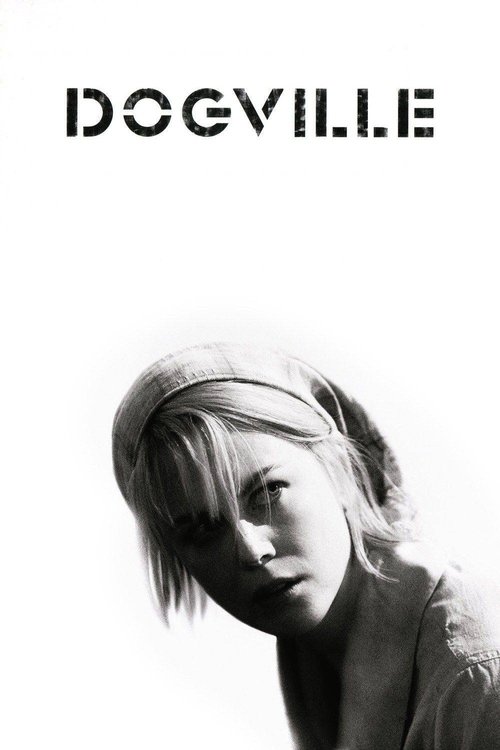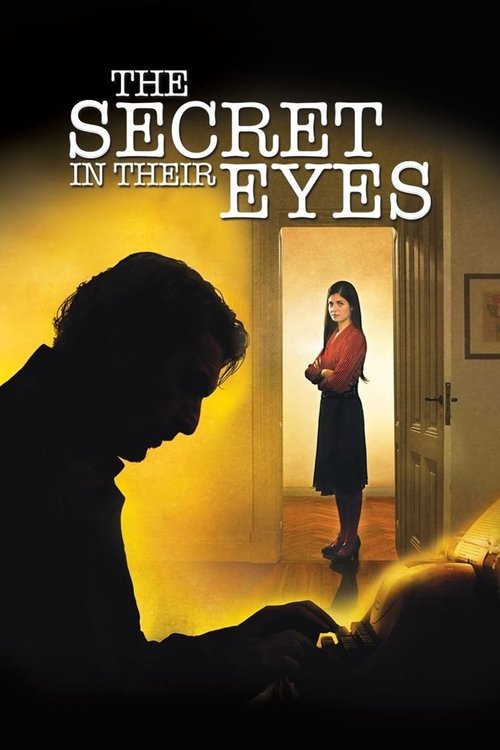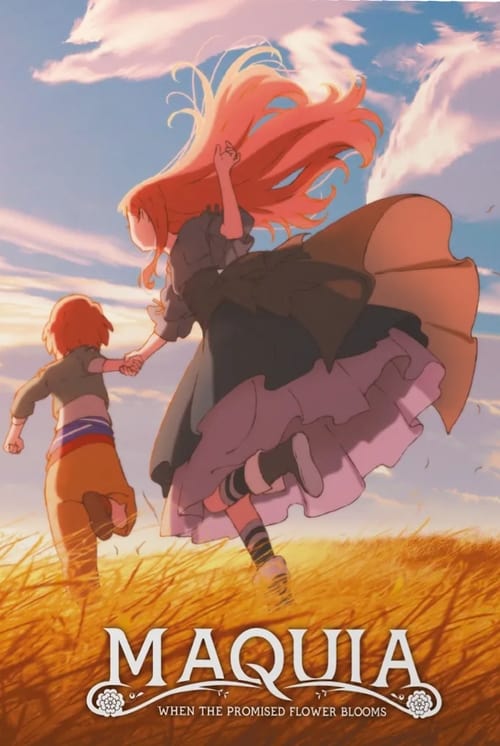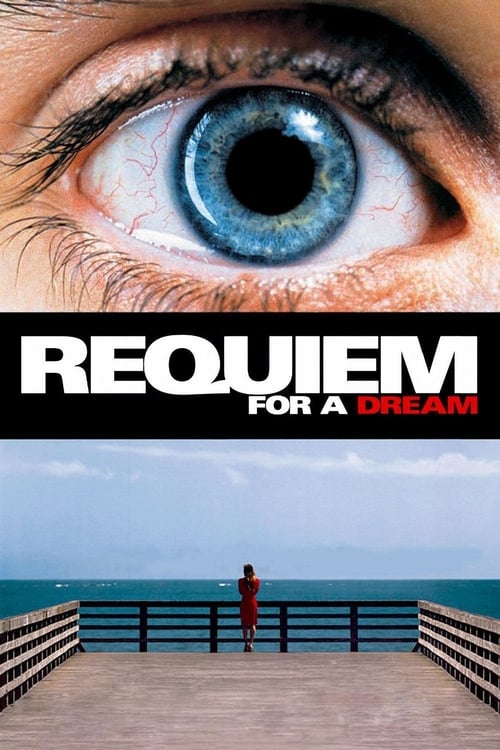
Dogville
When a beautiful young Grace arrives in the isolated township of Dogville, the small community agrees to hide her from a gang of ruthless gangsters, and, in return, Grace agrees to do odd jobs for the townspeople.
Quotes from Movie Dogville
Sound Tracks from Dogville by Björk
Ain't No Grave
Ain't No Grave by Johnny Cash, Played during the film's closing credits
The Greatest Gift
The Greatest Gift by You Can't See Me, Towards the end of the film
Download App
Memorable Scenes from Movie Dogville
Grace's Arrival in Dogville
The scene opens with Grace, played by Nicole Kidman, walking into the town of Dogville, seeking refuge from her pursuers. The townspeople are hesitant but curious. The pivotal moment occurs when Grace stands before the townsfolk, pleading for their help. This moment defines her vulnerability and sets the tone for the rest of the film, as her fate is now linked to this community. As she integrates into Dogville, she faces both kindness and manipulation, illustrating the thin line between compassion and cruelty. The aftermath of her arrival leads to her isolation and the gradual acceptance followed by betrayal from the townspeople, which deepens the film’s exploration of human nature and morality.
Context: Grace's arrival is symbolic of hope and the search for safety in a world where trust is scarce. It reflects her backstory and the dire situation she is escaping, creating tension and anticipation.
The Phone Call Incident
In this scene, Grace attempts to reach out for help using a phone, but the townsfolk intercept her. The pivotal moment is when one resident literally rips the phone line, signifying their control over her. The visuals show Grace’s face filled with despair as she realizes her powerlessness. This moment is crucial as it showcases how the town, supposedly a sanctuary, becomes a prison. The aftermath leaves Grace feeling isolated and helpless, while the townsfolk’s actions reveal their moral decay. This turning point deepens the theme of communal complicity in suffering.
Context: This moment encapsulates Grace's growing realization of her entrapment in Dogville, heightening the narrative tension and the stakes for her character.
Grace's Labor
Here, Grace works tirelessly for the townspeople, trying to repay her stay. The pivotal moment comes when the townsfolk take advantage of her, enjoying her labor without gratitude. The visuals display Grace’s exhaustion as she sweats under a hot sun, symbolizing her exploitation. This scene is significant because it shifts the townspeople's view from helpers to oppressors. As much as Grace gives, they take more, showcasing the theme of exploitation present throughout the film. The aftermath leads to growing resentment from Grace, who begins to realize her worth and the shallow nature of the townspeople’s goodwill.
Context: This labor dynamic illustrates the complex relationships between the characters, foreshadowing the dark turn of events as Grace's sacrifices go unappreciated.
The Dogville Trial
A shocking moment unfolds when the residents of Dogville hold a mock trial for Grace, questioning her motives and her past. The climax comes when the townsfolk decide her fate without any real evidence. The visuals of the townspeople sitting in judgment reflect their collective cruelty. This pivotal moment turns the community against Grace, further entrenching the film’s theme of mob mentality. The aftermath leaves Grace completely vulnerable, highlighting how trust can turn to betrayal in an instant. This scene showcases the fragility of human relationships under pressure.
Context: The mock trial functions as a microcosm of societal judgment, revealing how fear can drive people to irrational conclusions, ultimately heightening the film's tension.
Grace's Transformation
As Grace endures more suffering at the hands of the townspeople, she begins to change. The defining moment happens when she stands up and confronts the townsfolk about their treatment of her. The visuals capture her defiance, showing a woman who, despite the abuse, finds her inner strength. This transformation is significant as it marks a turning point in her character arc, shifting from victim to someone who refuses to accept her fate quietly. The aftermath shows her planning for retaliation, which adds a thrilling layer to the film as the viewer senses her growing power amidst her trauma.
Context: This moment serves as a critical emotional and narrative pivot, emphasizing themes of empowerment, resilience, and the desire for justice.
The Arrival of the Strangers
The arrival of strangers in Dogville brings a new key moment as the townsfolk's facade of civility is put to the test. The pivotal moment occurs when the townspeople welcome the new men, quickly abandoning Grace. This scene lays bare their hypocrisy, showcasing their willingness to betray Grace for the sake of their own interests. The visuals of Grace watching from a distance highlight her exclusion and desperation. The aftermath sees a split in the town, revealing the darkness lurking beneath their surface. This moment reinforces the theme of self-interest overshadowing communal bonds.
Context: The strangers symbolize disruption, challenging the intricate dynamics of power and dependency established in Dogville.
Grace's Final Confrontation
In this emotional climactic scene, Grace confronts the townspeople about their betrayal. The pivotal moment comes when she reveals her true identity and the power she holds over them. The visuals emphasize her authority, contrasting her earlier vulnerability. This confrontation shifts the power dynamic entirely and showcases Grace's evolution into a commanding figure as she refuses to be a victim anymore. The aftermath leads to a reckoning for the townsfolk, as they face the consequences of their actions. This scene powerfully encapsulates the idea of justice being served.
Context: This moment ties together Grace's journey, illustrating her transition from a helpless woman to one who takes control, reinforcing the film’s themes of power and redemption.
Final Reconciliation Scene
In the film's closing, the townspeople seek forgiveness from Grace after facing the repercussions of their earlier actions. The pivotal moment occurs when Grace ultimately decides whether to allow them back into her life. The visuals show a tense but hopeful atmosphere, filled with mixed emotions. This scene sets the stage for potential redemption and highlights the complexity of human relationships. The aftermath gives viewers a sense of unresolved conflict, leaving them to ponder the nature of forgiveness and whether it is ever fully granted. This moment encapsulates the human desire for connection despite past grievances.
Context: This closing scene reinforces the film’s exploration of guilt, redemption, and the struggles of rebuilding trust in a fractured community.
The Final Act of Revenge
As tensions reach a boiling point, Grace embarks on a calculated act of revenge against the townsfolk. The pivotal moment is marked by her cold demeanor as she plans her actions, showcasing her transformation from victim to avenger. The visuals reflect a stark shift into darkness, emphasizing the weight of her decisions. This act of revenge is significant because it encapsulates the perils of vengeance and the human condition’s darker facets. The aftermath leaves the viewers reflecting on moral complexities and whether retribution is justified.
Context: By exploring themes of vengeance and morality, this moment stands out for its emotional intensity and psychological depth.
The Black and White Rendering
This moment features an innovative turn in visuals where the entire setting is portrayed in stark black and white, symbolizing the moral clarity of Grace’s plight. The pivotal moment occurs as the narrative shifts to convey a surreal quality, severing her from the town’s dark reality. This artistic choice highlights Grace's isolation and underscores themes of hope amidst chaos. The aftermath ignites discussions surrounding the film's interpretation of morality and ethics. This stylistic choice is memorable for how it enhances the film’s narrative depth.
Context: The black and white rendering serves as a metaphor for Grace’s experience, emphasizing the duality of human nature and the choices we make.
The Power of Silence
A powerful scene unfolds where Grace chooses to embrace silence when faced with the townsfolk’s accusations instead of defending herself. The pivotal moment centers on her quiet strength amidst chaos, creating a tension-filled atmosphere. The visuals focus on Grace's stoic expression, revealing her inner turmoil. This silence is significant; it communicates far more than words could, underscoring her despair and strength. The aftermath transforms the townspeople's perspective, as they begin to realize the gravity of their actions, leading to a deep introspection. The emotional weight resonates strongly within the audience.
Context: This moment serves to highlight the impact of unspoken struggles, reflecting the broader themes of communication and miscommunication woven throughout the narrative.
The Town Meeting
During a heated town meeting, the residents debate Grace’s place in Dogville. The pivotal moment comes when factions form against her, showcasing the mob mentality at its worst. The visuals of faces filled with anger reveal a community unraveling under pressure. This moment is significant as it exemplifies the fragility of societal bonds and the ease with which compassion turns to cruelty. The aftermath deepens the divisions in the community, leading to an increasingly isolated Grace. This scene highlights the theme of conformity versus individuality.
Context: The town meeting symbolizes societal conflict, showcasing how easily fear can cloud judgment and dissolve empathy.
Grace's Act of Defiance
Grace surprises the townspeople by standing up during a moment of collective planning, challenging their prejudices directly. The pivotal moment happens when she declares her worth and demands respect. The intensity in her voice conveys a wealth of emotion, and the visuals show the stunned reactions of the townsfolk. This act of defiance shifts the power balance, marking a critical evolution in her character while simultaneously amplifying the tension. The aftermath highlights the changing dynamics within the community as they grapple with their biases. This moment resonates because it celebrates the courage found in standing up against oppression.
Context: Grace's defiance serves as a rallying call for empathy and recognition, exemplifying the film's exploration of personal strength in the face of adversity.
The Fateful Decision
In a climactic moment, Grace must choose between turning away from Dogville or continuing to endure the pain inflicted by its residents. The tension peaks as she weighs her options, and the visuals depict her internal struggle. The pivotal moment is her choice, which ultimately reveals her character's growth and resiliency. This decision is significant as it represents the broader themes of identity and the search for self-worth against societal pressures. The aftermath leaves viewers contemplating the cost of decision-making in an unjust world, making this moment poignant.
Context: This fateful decision symbolizes the crossroads in Grace's journey, emphasizing themes of sacrifice, agency, and moral conflicts.
The Mockery of Hope
The townspeople engage in mockery of Grace’s dreams for a better life, showcasing their true colors. The pivotal moment occurs during a celebration turned sour, revealing their insidious nature. The visuals are filled with laughter that turns sinister, emphasizing the betrayal of hope. This scene is significant as it highlights the shallow nature of the townsfolk’s kindness while further isolating Grace. The aftermath deepens the film's exploration of societal hypocrisy, leaving the audience in reflective despair as they witness broken dreams.
Context: This mockery encapsulates the film's harsh critique of human nature, challenging viewers to confront the darkness that often lies beneath surface-level interactions.
The Night of Betrayal
One night, events unfold that lead to Grace being violently betrayed by the very people she tried to help. The pivotal moment is marked by the brutal confrontation, shattering any remaining semblance of trust. The visuals are intense and emotionally charged, presenting a stark juxtaposition to earlier scenes of camaraderie. This moment is significant as it starkly illustrates the chaotic nature of human relationships when self-interest prevails. The aftermath profoundly affects Grace’s arc, setting the stage for her eventual transformation. This moment elicits deep emotional reactions, provoking feelings of horror and empathy.
Context: The betrayal is a critical pivot in Grace's journey, highlighting themes of trust, loyalty, and the dark turns of human nature.
The Realization
Grace comes to a harrowing realization about the town and her place in it after a particularly cruel encounter. The pivotal moment occurs when she internalizes the betrayal and begins to recognize her worth. The visuals capture her breaking down emotionally, emphasizing the weight of her experiences. This realization is significant as it serves as a catalyst for her ultimate decisions and actions. The aftermath shifts the film’s tone as Grace prepares to confront the townspeople with newfound strength, highlighting themes of realization and self-awareness.
Context: This moment encapsulates Grace's psychological development, showcasing the turning point where she moves from victimhood to empowerment.
Confronting the Past
As Grace revisits her past, she confronts her fears and insecurities that have followed her to Dogville. The pivotal moment happens when she accepts her reality rather than running from it, leading to a powerful emotional release. The visuals portray her growth through flashbacks, revealing her internal struggles. This confrontation is significant in tying her character's journey together, emphasizing themes of acceptance and growth. The aftermath sees Grace gaining clarity and strength, reinforcing the film’s exploration of resilience amid hardship.
Context: This moment serves as a deeper exploration of Grace's character, aligning with the film's themes of self-discovery and healing.
The Symbolic Farewell
In a poignant farewell scene, Grace leaves Dogville and the townspeople behind, symbolizing her break from the cycle of abuse. The pivotal moment occurs when she steps away into the distance, embodying her newfound freedom. The visuals are compelling, capturing both her pain and determination. This farewell is significant as it symbolizes liberation and the quest for self-identity beyond the confines of Dogville. The aftermath leaves the townspeople in a state of reflection, making viewers consider the cost of their actions and the idea of redemption. This moment resonates deeply, representing hope and resilience.
Context: Grace's farewell encapsulates the film's themes of releasing toxic relationships and the power of reclaiming one's life.
The Harsh Reality
Grace faces the harsh realities of Dogville's society, revealing the cruel underbelly of the utopian façade. The pivotal moment arrives when she witnesses the townsfolk's true intentions during an event that shatters her illusions. The changing visuals reflect the aftermath of her disillusionment, highlighting the film's unsettling commentary on human nature. This scene is significant as it reveals the disparity between appearance and reality. The aftermath leads to a chilling realization for Grace that the town may never embrace her truly. This moment evokes a sense of despair while simultaneously deepening the narrative’s exploration of societal dynamics.
Context: This realization moment is vital to Grace's character arc, solidifying her understanding of the dangers that lurk behind a facade.
The Community Divided
Tension escalates as divisions within the town become apparent, driven by greed and malice surrounding Grace. The pivotal moment occurs when different factions emerge, creating chaos. The visuals highlight the strain among neighbors, illustrating how quickly unity can devolve into distrust. This conflict is significant in that it showcases how the human desire for power can fracture bonds. The aftermath leads to further isolation for Grace, propelling her journey into darker territory. This scene resonates due to its intense depiction of how easily community can turn against itself.
Context: This moment exemplifies themes of division and the struggle for power, reinforcing the narrative’s exploration of communal dynamics.
Grace's Hidden Strength
In a quiet moment, Grace reveals her hidden inner strength to a trusted ally, showcasing the depth of her character. The pivotal moment comes when she expresses her resolve to stand against the town’s systemic cruelty. The visuals capture her determination, highlighting the contrast between her public persona and true self. This moment is significant as it marks a turning point where she asserts her agency in a narrative full of victimization. The aftermath shows her beginning to strategize against the encroaching threat, injecting a sense of empowerment into her character arc.
Context: This revelation serves to deepen Grace's character, aligning with the film's broader themes of inner strength and resilience.
Download App







